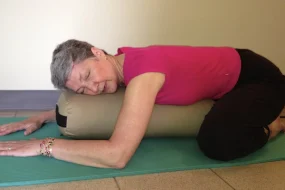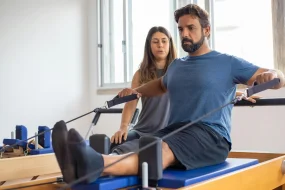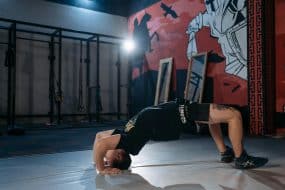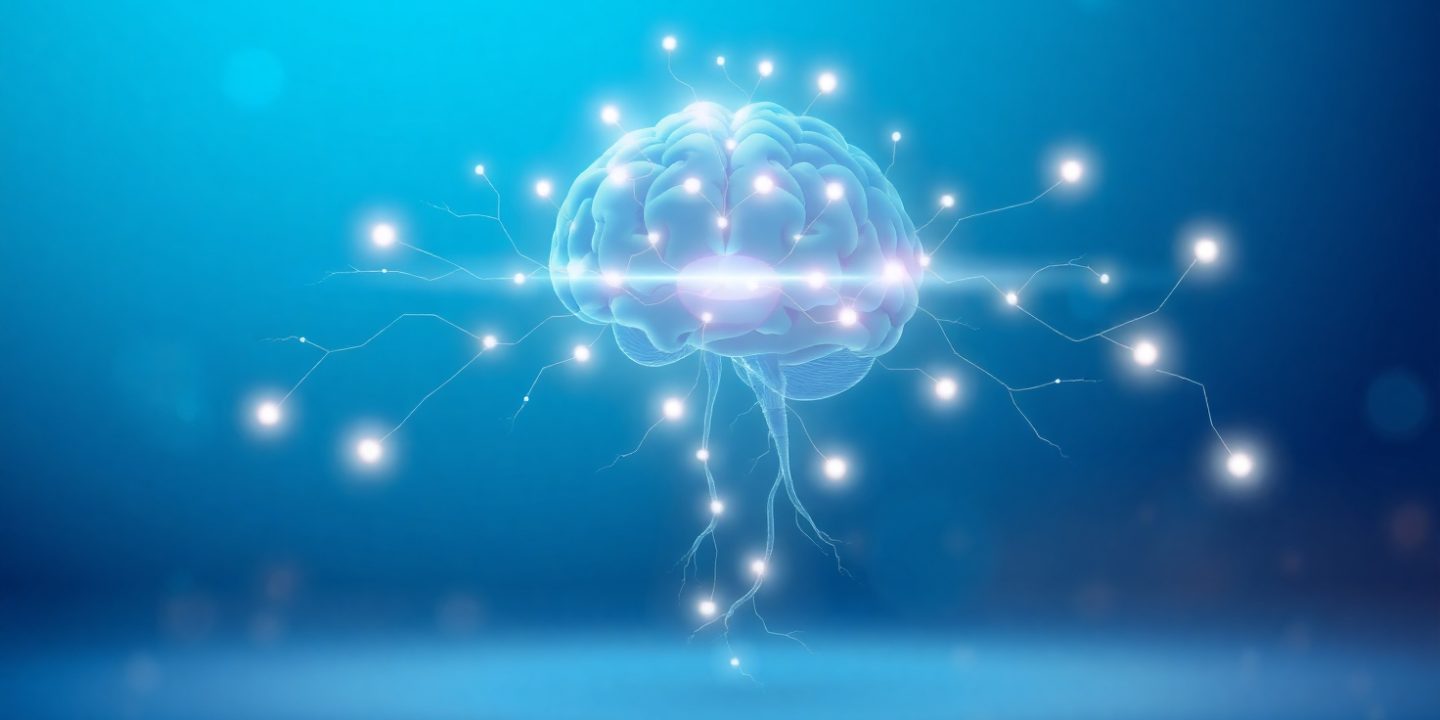
Overview of Somatic Yoga
Somatic yoga is a type of yoga that focuses on body awareness and being present. “Somatic” means the body, especially the internal feelings, movements, and postures we sense. Unlike popular yoga, which will often focus on alignment and physical postures, somatic yoga asks you to tune into your body’s internal feelings as you move.
In simple terms, somatic yoga is a healing art that will help you become more sensitive to physical sensations so you can reconnect with your body. It makes you move slowly and consciously, release tension, reduce stress, and become more aware of your body. Unlike focusing on specific postures, somatic yoga makes you focus on the sensations that arise with each movement, so deep healing and relaxation are possible. The basis of this practice is the belief that through increased awareness of our body and the sensations within it, we can sense and release tension built up from day-to-day stress, trauma, or emotional conflicts more effectively.
The Need to Reconnect with Your Body in Today’s Busy World
In this technology age, we can easily lose touch with our bodies and their messages. We ignore the messages our bodies send us as we sit in front of our screens, dash from one task to the next, or sit for hours at our computer workstations. This disconnection can result in a reservoir of tension, stress and discomfor,t and mental and physical imbalance.
To stay healthy and well, we need to reconnect with our bodies. Practicing somatic yoga allows us to pause, slow down, and really tune into how we are feeling in the moment. This reconnection can reduce stress, improve posture, and even improve mental health. Taking time for somatic yoga can be a powerful way to heal, rebalance, and nurture your overall well-being.
Introductory Somatic Yoga Allows Workers To Reduce Their Work-Related Anxiety

Somatic yoga serves as a unique method that reduces accumulated physical along emotional tension during the passage of time. Human bodies tend to accumulate stress and worry across the busyness of our moving society and work endeavors. This yoga system provides complete solutions against the mentioned issues. You can find this practice higher than simple stretches or working muscles. The practice requires us to notice our present physical sensations. Through this practice, we eliminate accumulated stress along with emotional weight to achieve deep healing, together with restful states.
Release of Stored Stress:
The body constricts muscles during stress, primarily affecting the shoulder area and neck and jaw, and all along the back. Time increases the accumulated tension in muscles that eventually gets stored within them, making it more difficult to move freely and triggering discomfort. The process of somatic yoga helps free bodily tension by teaching body awareness that targets natural muscular responses.
Each deliberate posture of somatic yoga works to stimulate the rest and digest mechanisms within the parasympathetic nervous system, which reverse the activation of fight-or-flight responses that stress creates. The conscious examination of breath and movement enables people to liberate stress-related physical tension and emotional burdens that present within the body. This system regulation through this process helps practitioners demonstrate better stability and more tranquility.
Somatic yoga offers healing methods to deal with emotional stress that has accumulated inside the body. Things we did not realize store themselves in our bodies through emotions, even though we were unconscious of these experiences. Practitioners who pay attention to their bodily sensations and relax tension discover buried emotions, which provide chances for psychological healing and emotional recovery.
Specific Somatic Yoga Movements or Sequences Known to Release Tension:
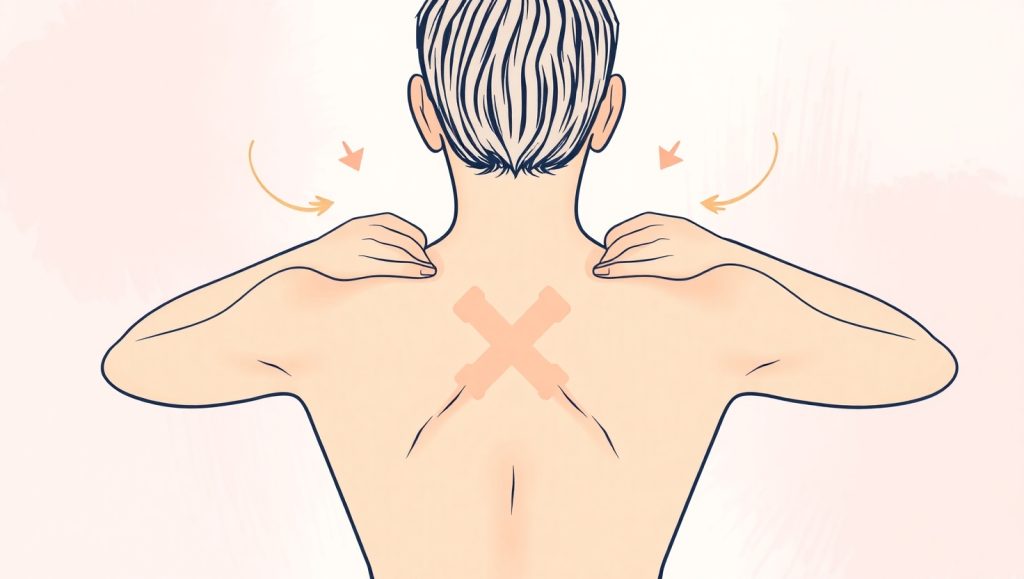
Specific movements and sequences from somatic yoga exist for stress relief through tension reduction. The practitioner experiences full body sensation awareness through these gentle and slow movements to reduce discomfort areas.
Cat-Cow Pose (Marjaryasana-Bitilasana includes alternating the spinal movement through cow pose arching and cat pose rounding of the back. The pose serves to unwind tension in all parts of the spine together with the shoulders and the neck. Through consistent movement while deep breathing, one can feel both relief from stiffness and better spine flexibility.
Many people store their stress in the shoulder area, which makes the shoulders a prominent storage spot for bodily tension. Shoulder rolls are basic exercises that lead the shoulders in a circular motion, starting from the front to the back. The slow shoulder movements assist in diminishing muscle tension and strengthening the upper body range of motion while reducing stress buildup.
The hips maintain tension predominantly in people who spend extended hours sitting down and benefit from performing Hip Circles combined with Pelvic Tilts. Circular movements around the hips combined with pelvic tilts enable you to relax your lower back and hips, thus increasing your flexibility and mobility. Such movements relax the pelvic floor because it serves as one of the main areas where emotional tension tends to accumulate.
Spinal twists offer two benefits: They expand spinal mobility and simultaneously dissolve back and shoulder, and chest tension. A practitioner uses gentle movements to the sides of the body for improved circulation and to help digestion while easing tension throughout the spine and all adjoining muscles.
Child’s Pose (Balasana) provides both relaxation benefits alongside back and hip flexibility through its stretches. The body allows complete relaxation of tension from the lower back and hips while both breathing and surrendering into the pose support this process, which leads to a sense of calm ease.
Scientific Insight:
Various studies have demonstrated that somatic practices effectively impact the nervous system through muscle relaxation while reducing stress levels, which indicates that somatic yoga functions well for stored tension release yoga.
Academic research published in the International Journal of Yoga detected that body awareness practices, including yoga stimulate the parasympathetic nervous system responsible for relaxation responses. The autonomic state of the body shifts through somatic yoga practices from fight-or-flight to rest-and-digest mode, thus decreasing stress and anxiety levels. The practice leads to deep relaxation while it facilitates the discharge of physical and emotional tension from the body.
Collective research published in the Journal of Bodywork and Movement Therapies proves that somatic methods which include yoga reduce the occurrence of persistent muscle tension along with chronic pain. Somatic yoga exposes people to body awareness to help reduce muscle tension in targeted areas which results in better body position and relaxed muscles.
The research field of somatic psychology discovers that somatic yoga, along with its counterparts, enables emotional trauma stored within the body to become manageable. When individuals practice mindful movement, they have access to emotional blockages stored in their bodies, which helps release emotional trauma and practices further develop their resilience capabilities.
A research paper published in the Journal of Pain demonstrated that serving as a vital part of somatic yoga practice leads patients with chronic pain to experience better body flexibility and diminished pain experiences. Slow and mindful body movement during somatic yoga assists patient bodies to restore their flexibility while easing bodily tensions that contribute to pain development.
Somatic Yoga for Different Individuals
Somatic yoga stands as a flexible exercise form that helps every individual starting from novices to persistent pain sufferers or emotionally distressed people. It’s a soft, mindful practice that provides entry to all people without requirements for experience or physical capabilities. The following sections analyze how somatic yoga addresses individual needs for different groups of people.
For Beginners:
The gentle nature of somatic yoga brings substantial accessibility to those who have just started learning yoga. The open approach of somatic yoga enables new practitioners to enter at their individual speed regardless of their skills in flexibility and strength. People who are just starting their yoga journey or exercise practice will find somatic yoga perfect because it avoids target poses and encourages body-sensation exploration.
Students who are new to yoga do not need to possess any experience or advanced physical capability to practice. Somatic yoga welcomes its participants to learn at their current level of ability without requiring performance above what is comfortable. The slow-paced nature enables new practitioners to establish body awareness through movement practices that enable them to find comfort in their exercise routine.
Body awareness stands as an important advantage that new students achieve through this practice. Through somatic yoga, participants learn to detect physical body signals, which enables them to practice body movement with mindfulness. Such awareness proves beneficial to new practitioners learning body mechanics and those who have maintained low physical activity throughout the past.
Through its approach to gentle stretching exercises, somatic yoga enables beginners to develop their flexibility and mobility as part of their practice development. The practice helps people move forward individually while enabling them to observe their physical growth step by step.
Somatic yoga creates gentle yoga practice suitable for beginners because it helps develop body awareness together with enhancing flexibility while creating well-being through straightforward methods.
For Those with Chronic Pain or Injury:
Somatic yoga provides excellent benefits to people dealing with persistent pain or patients recovering from injuries. Because somatic yoga integrates gentle more therapeutic workouts it acts as a healing method for people who cannot handle standard forms of exercise because of their physical constraints or persistent pain.
The practice focuses on methodical slow motions as its main principle to prevent damage to the body. The practice enables easy adjustments to enable participation from individuals whose mobility or pain levels differ. When someone feels discomfort they can select particular movements that need changing to prevent worsening of their pain.
The recovering process needs somatic yoga because it promotes movement through injury sites to rebuild both function and mobility. The practice aims at specific muscles and joints which have stiffened or weakened because of injuries or inactive times by offering controlled stretching and strengthening.
The mindful approach in somatic yoga enables users with ongoing pain to create better methods to handle their condition. The body awareness enables practitioners to locate painful areas so they can discover effective pain management strategies through measured physical exercises and relaxation methods. Through this method people gain insight to detect exercises that intensify pain while learning which activities lead to pain relief.
Through its safe and therapeutic approach somatic yoga enables patients with chronic pain or injury to establish physical connection and gain movement functionality while healing their bodies naturally.
For Those Seeking Stress Relief:
Somatic yoga delivers beneficial results to people facing both mental exhaustion and excessive stress levels. Its emphasis on mindfulness together with relaxation makes this practice a great mental relaxation method which also lowers stress levels and builds emotional wellness.
Somatic yoga activates the parasympathetic nervous system to counteract stress along with anxiety thus becoming a prime benefit for this practice. Through deliberate slow movements coupled with deep breathing techniques, the body achieves entrainment to relaxation which lowers cortisol stress hormone quantities and enables a feelings of well-being.
Somatic yoga serves as a tool to help release physical symptoms which develop from emotional tension because stress manifests through body tension. The practice of paying attention to physical body messages while accepting emotional reactions leads practitioners to experience emotional relief. People who practice in this environment experience emotional clarity as well as lightness that aids them in processing difficult emotions.
Somatic yoga serves as a preventive measure against burnout because it gives people who face emotional exhaustion from their professional responsibilities or caretaking duties or general life stresses an opportunity to refocus their energy towards themselves. The practice guides people toward decreasing their pace so they can practice self-care methods while giving their bodies and their minds appropriate attention. Through somatic yoga practice, people establish a capacity to withstand future pressures which protects them from burnout symptoms and its related health impacts.
People who experience stress need better sleep together with relaxation because sleep problems commonly accompany stress management difficulties. The somatic yoga method of relaxation along with its ability to quiet the nervous system helps people achieve better sleep quality. Engaging in this practice results in deep restful sleep because it helps the body and mind reach a state of calm before bedtime thus creating an easier transition to relaxation at the end of a busy day.
Tips to Get Started with Somatic-Yoga
Commencing your somatic yoga journey provides a perfect opportunity to bond with your body while lowering pressure while developing improved general health. Several important guidelines exist to achieve success and enjoyment during somatic yoga practice even though the practice remains open to all levels of practice. These guidelines will assist both beginner yoga practitioners and experienced practitioners to maximize their yoga journey.
Find a Qualified Teacher:
Newcomers to somatic yoga should start their practice through instruction from an experienced teacher. Your qualified teacher will lead you through the body movements while teaching you to become more aware and making proper body adjustments to address your specific needs.
Through Somatic yoga you should develop the capability to detect body sensations as well as interpret each movement perception. A competent teacher will help students develop body awareness through effective teaching methods and practical techniques for skill improvement. The teacher helps students notice both their held tensions and unsafe movement patterns.
Starting your practice safely becomes possible through an instructor who verifies correct movement performance. The instructor provides essential guidance about body position along with breathing techniques and constant pacing to both match your organic body movement and avoid unnecessary strain.
Your body shines in somatic yoga and so a dependable teacher can make modifications to fit your personal situation whatever your physical constraints and wellness needs.
Many qualified teachers now provide video sessions and tutorial classes for home-based practice since they no longer conduct in-person classes. Search for educators that specialize in somatic yoga together with therapeutic practices such as body awareness and mindfulness.
Create a Comfortable Space:
A comfortable and inviting space needs to be established for your somatic yoga practice because home practice requires it. Your environment selection directly influences your practice experience because these guidelines will help you establish a relaxing setting that provides support:
You should select a peaceful space without disturbances to achieve the best practice results. Your ability to concentrate on body movements will improve along with your breath and bodily feelings when you establish full attention.
The mat which you use must offer sufficient cushioning to your body especially for those who have tender knees hips or backs. For longer periods of sitting or kneeling position add a cushioned mat under you by placing either a thicker mat or a blanket or cushion.
When you generate a dim atmosphere with relaxing elements it becomes easier to relax and comfort your mind. You can enhance your relaxation by either dimming the lights or putting up a candle or playing soft listening music. People use essential oil aromatherapy as well as incense to increase the relaxation experience.
You should have unobstructed movement space throughout the area. Somatic yoga conducts subtle body movements but an empty area is necessary for stretching along with rolling and flowing through gentle poses.
Space creation becomes more appealing when you incorporate items such as gentle water bottles or relaxing wall art and comforting blankets. The overall purpose of these elements is to develop a relaxing and mindful area that allows smooth transition into your yoga routine.
Listen to Your Body:
Somatic yoga placed great emphasis on body awareness which helps students develop a sense of personal movement speed along with body awareness. The exercise requires both physical and psychological skills that enable people to honor their body signals rather than pursuing physical achievement goals.
While practicing somatic yoga each person remains mindful about their physical state and their current capabilities. Physical boundaries must be respected so you should avoid attempting positions that cause discomfort or pain. Anytime a movement does not feel proper it is perfectly acceptable to modify it by stepping away or leaving that movement out entirely. Maintaining both comfort and safety for your body takes precedence in all circumstances.
Somatic yoga exercises demand patient and gentle movements which surpass the more vigorous practices of other forms of yoga or exercise. You should perform delicate movements to feel your body sensations because tension will naturally dissolve in a gradual manner. Your process of discovering body needs requires patience because you need time to develop this understanding.
Pay attention to your respiratory pattern while deep and slow breathing helps track body tension and discomfort. Check your breathing for signs of extra effort or strain when you move because this indicates the moment to relax your muscles as well as make your movements smoother. When a pose becomes too intense take a rest followed by changing the pose to achieve better comfort.
Somatic yoga follows a steady pace because the goal is not fast results or perfect performance in movements. Your understanding of your body builds up through a slow development process which occurs with every practice session. You should allow the body’s changes to appear naturally because the growth of awareness and relaxation occurs through time.
You should spend a few minutes toward the end of each workout to monitor your body sensations. You should identify which parts of your body demonstrate ongoing tension. Does your body currently demonstrate relaxation along with centering? Your understanding of your physical state acquired through self-reflection helps strengthen your practice by producing more beneficial results.
Conclusion
Through its transformative practices somatic yoga allows people to recover their body awareness, allowing tension relief for better well-being. Through slow controlled movements and body sensation practice you learn to establish better self-body harmony through somatic yoga. The practice of somatic yoga provides multiple health benefits including flexible body movement, mental stress reduction yoga, improved posture correction, emotional relief and awareness of your body’s condition which makes it the perfect therapy for holistic recovery.
The method of somatic yoga enables beginners and those with persistent health conditions and people maintaining stress levels to practice for achieving better emotional well-being and improved physical health. Although it requires practice you will learn better about your body and its requirements which ultimately leads to mental relaxation and physical vitality.
Even those new to yoga should attempt somatic yoga practice. Thorough regular practice will help you witness beneficial changes to your health together with your mental state. Performing these movements leads to self-detection while stress reduction allows you to achieve inner peace in your hectic life schedule. The somatic yoga system provides users a powerful ability to connect their body signals with mental training to develop sustainable changes in their total wellness.




